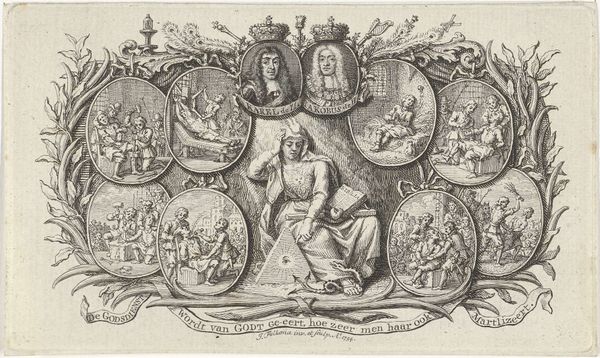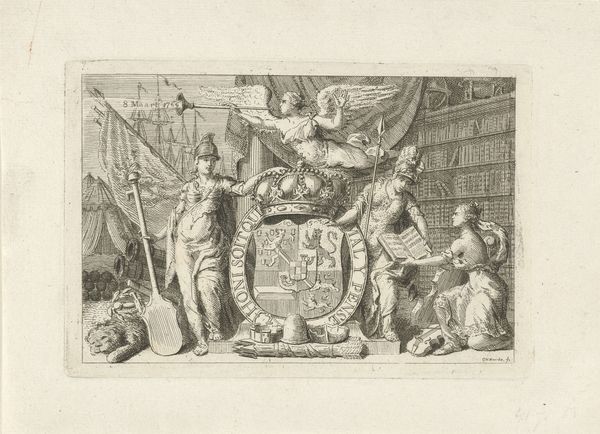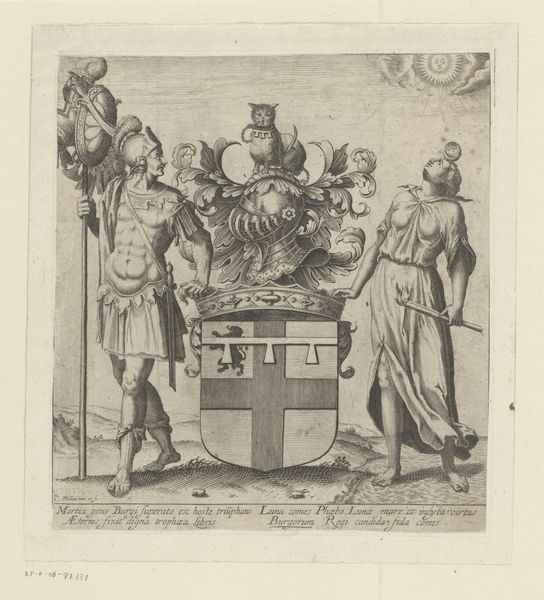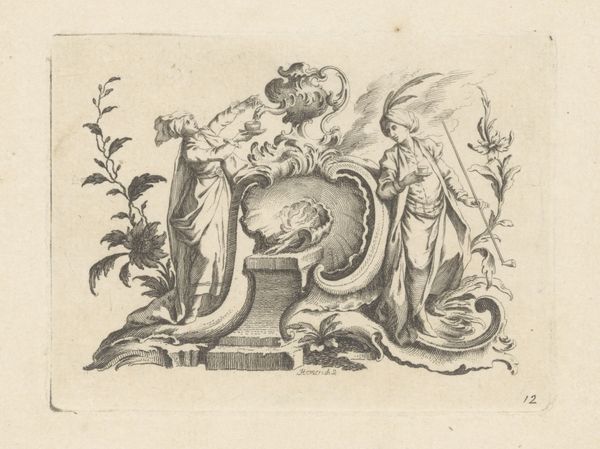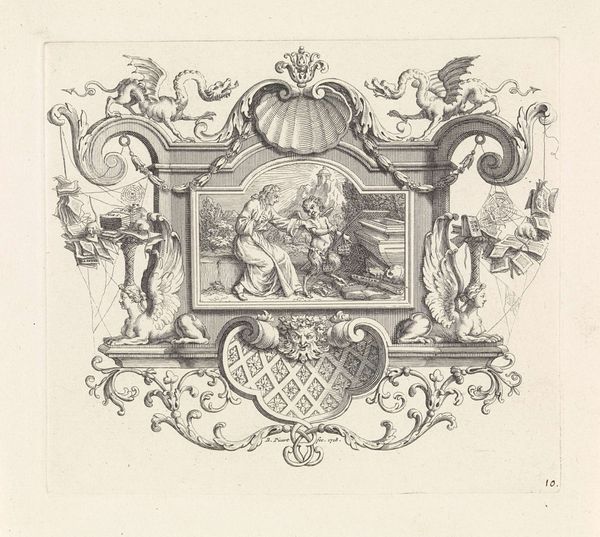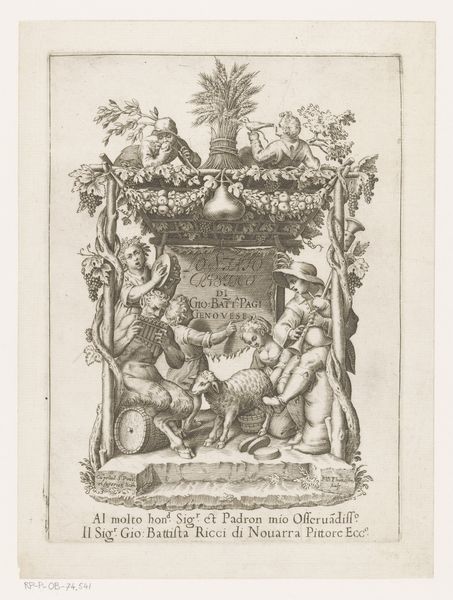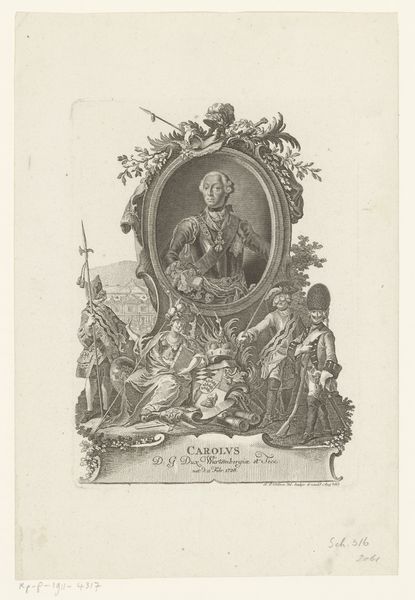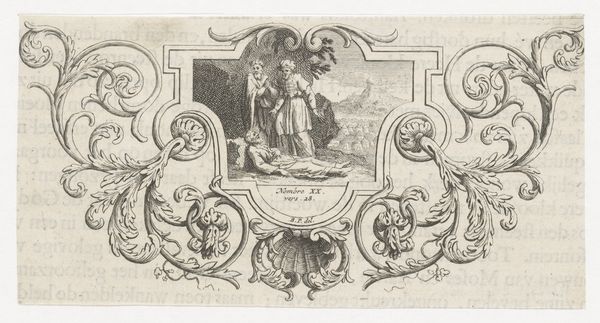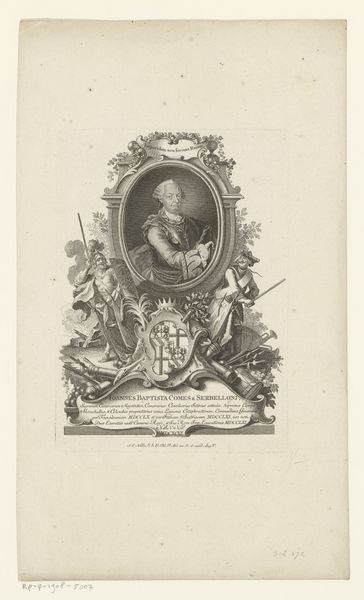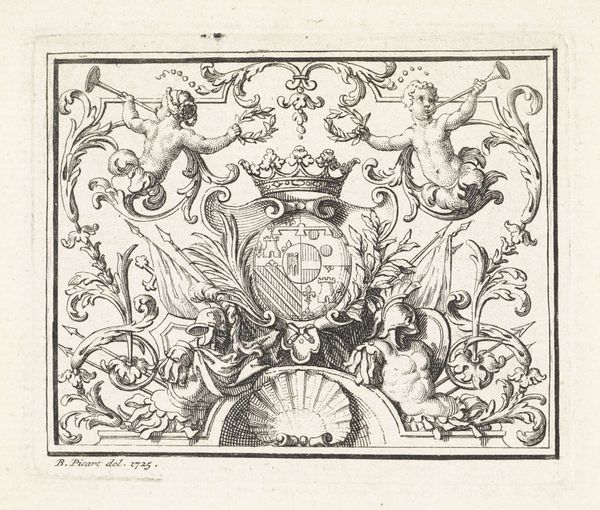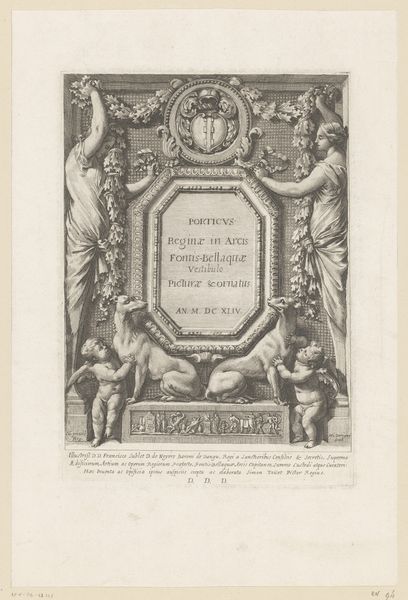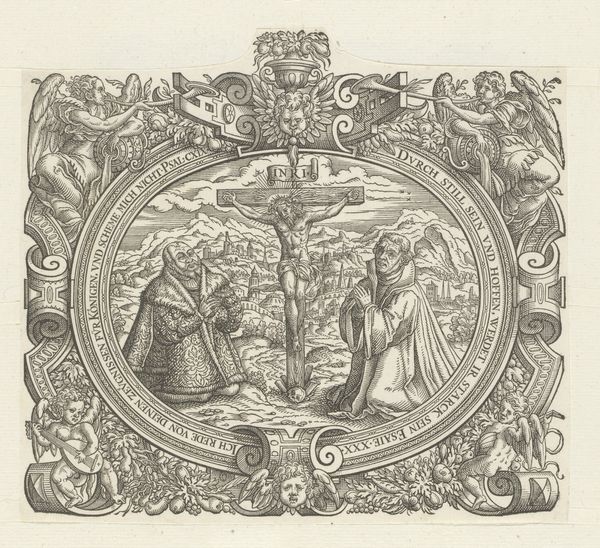
drawing, print, ink, engraving
#
portrait
#
drawing
#
allegory
#
baroque
# print
#
ink
#
history-painting
#
engraving
Dimensions: height 345 mm, width 578 mm
Copyright: Rijks Museum: Open Domain
Curator: The fine lines of this engraving by Romeyn de Hooghe give it a distinctly classical air. Created in 1687, the print—titled “Kaart van het Hoogheemraadschap van Rijnland (tweede deel)”—offers a detailed, if embellished, representation of the Rijnland water board. Editor: It’s quite impressive, a symphony of crests, figures, and scrolling banners all rendered in delicate strokes of ink. It feels almost like a stage set, doesn't it? Curator: It does. And it reflects the period's growing sense of civic pride. These water boards wielded considerable power; managing waterways was, after all, essential to the Dutch Republic's survival and prosperity. De Hooghe illustrates not just the geographical control of the region but also the individuals at its head. Editor: The figures strike me. The woman seated centrally, draped in classical garb – what is she meant to signify? Is she Rijnland personified? And the crests behind her held by the cherubs; how did those emblems operate in the social imagination of the day? Curator: Indeed. The female figure can certainly be read as an allegorical representation of Rijnland itself, evoking ideas of governance, fertility, and perhaps even divine right over the landscape. As for the heraldry, consider this print almost a roll call of the local elites who served on the water board, thus wielding great authority and influence in their society. These families contributed substantially to the financial stability of the area through the investments in infrastructure and flood control. Editor: It feels as if it's almost layering different symbolic realms – familial lineage and localized civic responsibility are brought to life. It’s fascinating to consider how images were deployed as mechanisms for power and belonging. Curator: Absolutely. Art like this didn’t simply reflect society but actively helped shape it. By visually connecting these individuals to this critical civic entity, de Hooghe reinforces and legitimizes their authority within Dutch society. Editor: Looking closely has helped me see this image not just as a pretty cartographical flourish, but a carefully constructed visual argument about power. Curator: And I now see it as more than an organizational document; it is in essence, a celebration of authority and communal spirit at the close of the 17th century.
Comments
No comments
Be the first to comment and join the conversation on the ultimate creative platform.
